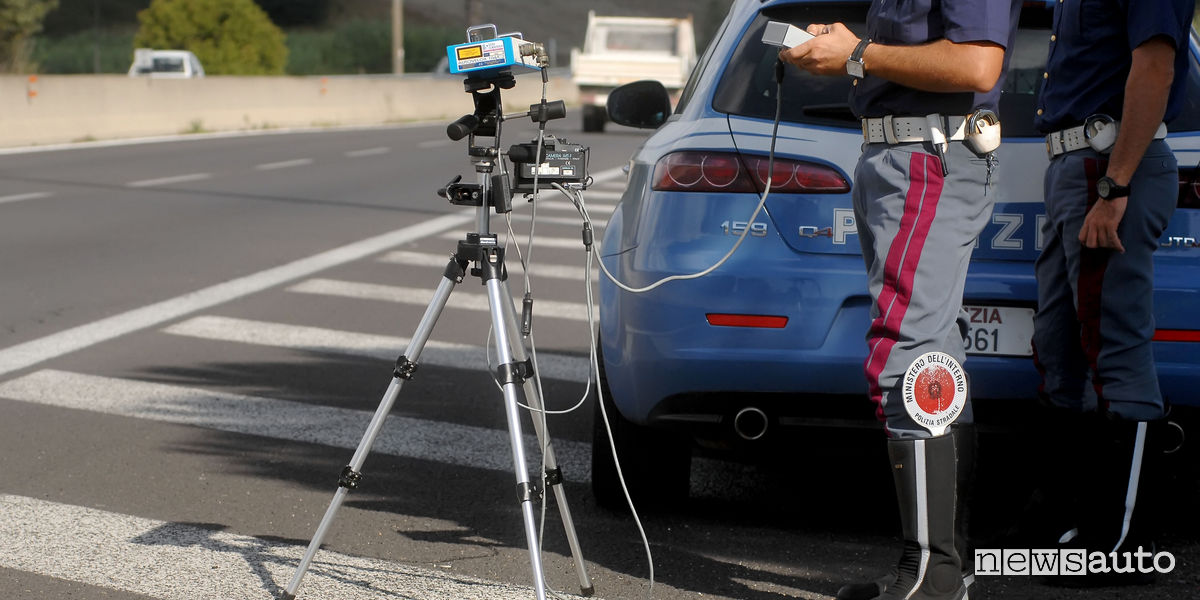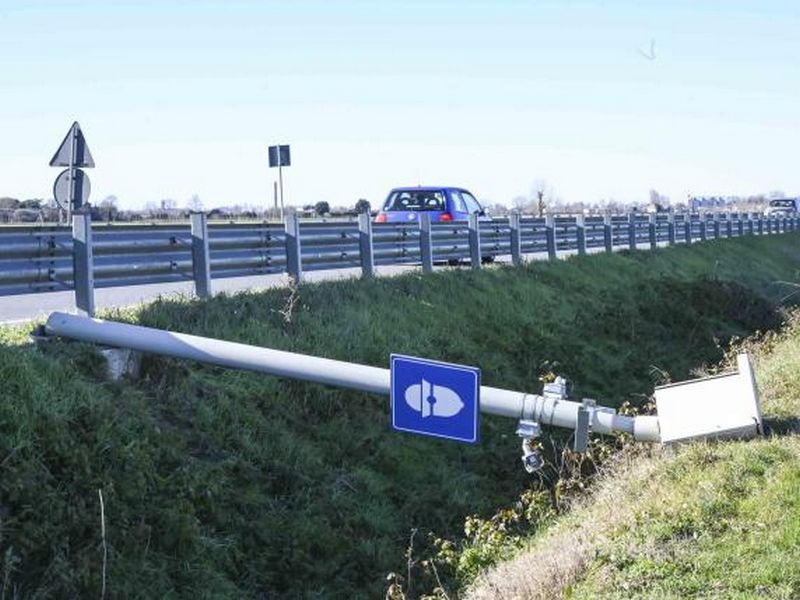The Ministry of Transport, led by Matteo Salviniofficially presented the decree to regulate the Speed Cameras. This is an inter-ministerial decree which also involves the departments of the Interior and Infrastructure, with the aim of imposing stricter rules and detailed information about the detectors for prevent abuse by some Municipalities that use fines as a source of income. In total it consists of six articles And two attachments.
Speed cameras prohibited
Speed cameras can be used on motorways, main, secondary and local highways only if the speed limit is not more than 20 km/h lower compared to that provided for by the Code for that type of road. On cycle-pedestrian itineraries on extra-urban roads, the limit must not be less than 30 km/h.
There average speed it can only be monitored on motorways, main and secondary extra-urban roads, with a distance of at least 1 km between the entry and exit “portals”.. The distance between the speed limit sign and the speed camera must be at least one kilometre.
On urban roads where possible, authorities will have to prefer speed bumps to speed cameras. Speed detectors they can only be used if the speed limit is not lower than 50 km/h on urban roads, 50 km/h on neighborhood and local urban streets, 30 km/h on urban cycle roads and not lower than 30 km/h on cycle/pedestrian itineraries. They cannot be installed on roads where the speed limit is more than 20 km/h lower than the maximum established by the code for that type of road.
The distance between the speed limit sign and the speed camera must be at least 200 meters on urban roads and at least 75 meters on other roads. The minimum distance between two speed cameras must be at least 500 meters in urban areas and in border areas with extra-urban areas. There average speed it can only be checked on urban roads along stretches of at least 500 metres, with a distance of at least one kilometer between two sections under control.
Mobile speed camera stations
On extra-urban roads, mobile speed camera stations cannot be positioned where the speed limit is too low. Furthermore, they must only be used where the speed limit is no more than 20 km/h lower than the maximum established by the code for that type of road. The distance between the speed limit sign and the speed camera must be at least 1 km. Between two consecutive devices, the distance must be at least 4km on highways, 3km on main extra-urban roads e 1 km on other roads.
The mobile speed camera stations on the urban streets according to the new rules they can only be used where the speed limit is not lower than 50 km/h on urban roads, 50 km/h on urban neighborhood and local roads, 30 km/h on urban cycle roads and not lower at 30 km/h on cycle/pedestrian routes.

Between two consecutive speed cameras on the same road, there must be a distance of at least 1,000 meters on urban roads and 500 meters on neighborhood and local streets. The distance between the speed limit sign and the speed camera cannot be less than 200 meters on urban roads and others 75 meters on other roads.
Speed camera approval
On roads other than motorways, speed camera stations can only be placed in advance agreed planning at the Permanent Provincial Conference. The goal is to avoid duplications and superpositions, ensuring effective control of speed limits and avoiding multiple detections on the same stretch of road or in the same period. The conditions for installing speed cameras include a high level of speed-related accidentsthe impossibility of immediate protest, and an average speed of vehicles exceeding the permitted limits.
Municipalities and provinces will have to remove speed cameras that do not comply with the new rules within 12 months. The inspection costs must be documentable and analytical. Only the costs incurred for identifying the offender via public databases (the cost of which is minimal or practically nil) can be included in the report. From now on Expenses relating to the use of the equipment are not permitted nor subsequent costs such as legal assistance or debt collection. In summary, only postage costs can be considered.
Equipment can be acquired via leasing, fixed-rate rental, loaned by other public administrations or road concessionaires. Payment to the supplier must be proportionate to the cost or time of use of the equipment, without relation to the penalties assessed or collected.
The police force must manage and validate violations, while private individuals can carry out minor activities such as printing photographic documents and administrative management of reports.
Rules against the wild use of speed cameras
The objective of this reform on speed cameras is to eliminate wild fines, as also denounced by Fleximan. According to 2023 data, penalties for violating the Highway Code generated a increase in collections for Italian municipalitiesreaching beyond 1.53 billion euros, an increase of 6.4% compared to 2022 and 23.7% compared to 2019.
This represents a significant financial contribution for entities often in economic difficulty, which limits their investments in road infrastructure and on safety. In fact, according to data on fines in 2023, a large part of the proceeds from fines is not used to comply with the obligations established by the Highway Code, but to finance other initiatives.

Although the Highway Code provides that the 50% of the proceeds of the fines is intended to raise awareness of road safety and that the proceeds deriving from speeding fines are reinvested in works to improve road infrastructure, a recent report ofAsaps and of theLorenzo Guarnieri Association highlights that Municipalities often allocate the proceeds of fines to other purposes.
For example, in 2022, the first 14 Italian cities by number of inhabitants they have collected overall 549 million eurosof which only a small part was allocated to road safety education.
Read also:
→ Bologna speed limit of 30 km/h
→ Speed limit 30 km/h, maximum and minimum
→ Fleximan the latest news
→ Read other related topics
→ What do you think? Drop by discussions on the FORUM!
#Speed #cameras #banned #city #kmh #rules
